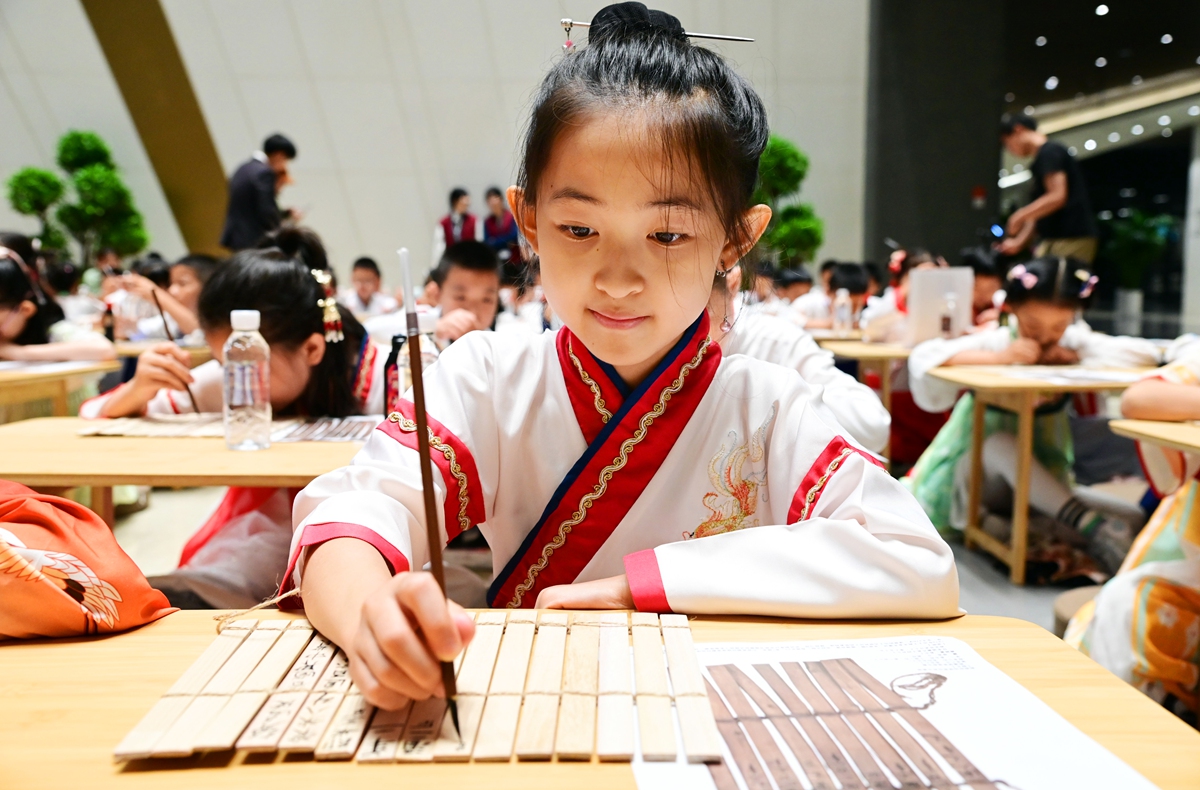ARTS / CULTURE & LEISURE
Up to 1,000 bamboo, wooden slips debut in Gansu museum

Gansu Bamboo Slips Museum Photo: VCG
More than 1,000 precious bamboo and wooden slips were put on display on Saturday to pull in numerous people to the new hall at the Gansu Bamboo Slips Museum in Lanzhou, Northwest China's Gansu Province.
Recreating a spectacular view of the Silk Road during the Han Dynasty (206BC-AD220), most of these bamboo slips are being showcased for the first time since they were unearthed in Gansu.
Bamboo slips, known as bamboo scrolls in ancient times, each contains a narrow vertical column of dozens of characters, making them one of China's earliest forms of books. They used to be the most important objects to write on before paper was invented. A bamboo slip, or even a character on it, might provide crucial clues for solving archaeological puzzles and revealing an unknown episode of history.
Gansu's dry climate helps better preserve these fragile relics. More than 60,000 bamboo slips (most of them are Han bamboo slips) have been discovered in the region since the 20th century, accounting for more than half of the total number of bamboo slips in the country. This is why the region is often considered as "the hometown of Han bamboo slips."
The new hall will display bamboo slips to the outside world and become another platform and window for the public to understand traditional Chinese culture, according to media reports.
More than 10,000 pieces of paper, textiles, wood, lacquer, iron, bone, pottery and other cultural relics are displayed in the museum, which has a total of 1,679 first-class cultural relics.
The museum attempts to make the bamboo slips come alive through various means such as combining light, sound and technology to depict the people and events recorded on the bamboo slips. Through this image restoration of a Han border area, the museum intends to entice the public to learn more about the culture of the bamboo slips and their stories.
On March 20, 2023, more than 10,000 bamboo slips were unearthed at the Hebosuo Site in Kunming, Southwest China's Yunnan Province. Roughly 2,000 of them still had legible Chinese characters.
